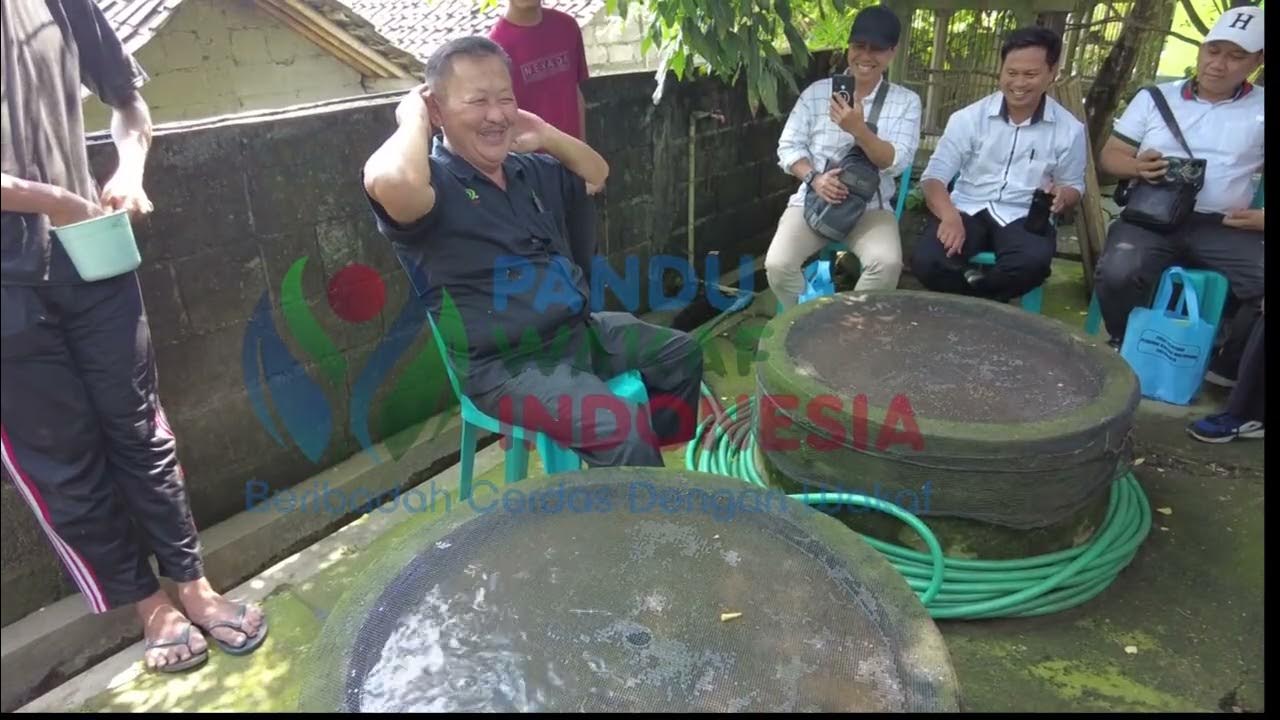TIPS BUDIDAYA IKAN LELE AGAR UNTUNG BESAR
Summary
TLDRIn this video, Amin Ilham, the owner of Al Islam Catfish Cultivation, shares his journey and insights into catfish farming. He discusses his initial skepticism about the profitability of the business and how his experiences led him to discover its potential. Amin emphasizes the importance of observation, proper water and feed management, and choosing the right pond system. He explains the challenges and rewards of catfish farming and encourages others to view it as a long-term business opportunity, highlighting its sustainability and the ongoing demand for fish consumption.
Takeaways
- 😀 Catfish farming can be a profitable business if approached strategically, even if initial profits are thin.
- 😀 Catfish farming requires careful observation of the fish's condition, water quality, and feeding practices to ensure healthy growth.
- 😀 Round ponds save space and can be more effective than square or dug ponds, especially when using a conventional system.
- 😀 The key to profitability is scaling up the operation, with more ponds leading to higher fish production and greater profits.
- 😀 Feed cost is the largest expense in catfish farming, so minimizing feed costs by selecting the right types and brands is crucial.
- 😀 Catfish feed should contain a minimum of 31-33% protein for optimal growth, and selecting high-protein feeds can lead to better results.
- 😀 The water quality is essential for fish growth; using flowing water can accelerate catfish growth by continuously removing waste.
- 😀 Regular observation and maintenance of water quality help prevent diseases and ensure healthy fish, with different water types impacting growth rates.
- 😀 It's important to choose appropriate water sources (e.g., wells, PDAM, irrigation) and manage them carefully to avoid contamination.
- 😀 Starting small and having a solid mental preparation is key to success, with the mentality being just as important as the physical setup in catfish farming.
- 😀 Catfish cultivation remains a promising business, with growing demand for fish in the market and the potential for higher income through larger-scale operations.
Q & A
What motivated Amin Ilham to start catfish farming?
-Amin Ilham was initially motivated by the availability of unused land and the idea of cultivating catfish after discussing with friends. The land had issues with grass and unproductive trees, making it an ideal space for catfish farming.
How did Amin Ilham start his catfish farming business?
-Amin started with four ponds, each holding around 1,500 to 2,000 fish, using a conventional system. He learned as he went along and gradually expanded to 22 ponds, continuously improving his methods and understanding of the business.
What system does Amin use for catfish farming, and why?
-Amin uses a conventional system for catfish farming. He prefers round ponds over square or dug ponds because they save space and can be more easily managed, resulting in better fish growth.
How does the size of the operation affect the profitability of catfish farming?
-The profitability increases with the scale of the operation. Amin suggests that if catfish farming is treated as a business, the larger the number of ponds, the higher the profit. Small-scale operations tend to yield smaller returns.
What factors are most important for maximizing profit in catfish farming?
-The key factors are feed cost, feed quality (specifically choosing feeds with a protein content of 31-33%), and finding middlemen who offer the highest prices for the catfish.
What is the difference between using flowing water and settled water in catfish ponds?
-Flowing water is preferred by Amin because it helps dispose of waste and keeps the water fresher, which accelerates the fish's growth. In contrast, settled water requires more monitoring but can still be effective with proper care.
How does water quality impact catfish farming?
-Water quality directly affects the fish's appetite and growth rate. Fresh, clean water with minimal contaminants is crucial for keeping the fish healthy and ensuring they grow quickly.
What is Amin's approach to observing and caring for the catfish?
-Amin emphasizes daily observation of the fish and their environment. By monitoring the water quality and feed intake, he ensures that the fish are growing healthily and are free from diseases.
How does Amin handle the challenges that come with catfish farming?
-Amin prepares for challenges by maintaining a strong mentality and being ready for setbacks. He shares his experiences with others, focusing on the difficulties of the industry to help them build resilience.
What are Amin's views on the future of catfish farming?
-Amin believes that catfish farming remains a promising business, as there is a consistent demand for fish consumption. Despite challenges, he sees potential for growth, especially if approached with the right mindset and strategy.
Outlines

This section is available to paid users only. Please upgrade to access this part.
Upgrade NowMindmap

This section is available to paid users only. Please upgrade to access this part.
Upgrade NowKeywords

This section is available to paid users only. Please upgrade to access this part.
Upgrade NowHighlights

This section is available to paid users only. Please upgrade to access this part.
Upgrade NowTranscripts

This section is available to paid users only. Please upgrade to access this part.
Upgrade NowBrowse More Related Video

Prof.,Dr. Gembong memberikan edukasi bagaimana cara budidaya ternak lele tidak berbau

Hasilkan Ratusan Juta di Umur 26 Tahun! Sukses Budidaya Lele, Panen 12 Ton Perbulan

Lele Dalam Ember Minim Lahan | WHAT??? (20/09/23)

Sukses Budidaya Bibit Lele - Inspirasi Bisnis

PELIHARA LELE DARI KECIL SAMPAI PANEN HANYA DI DALAM GALON ⁉️❗

7 KESALAHAN PEMULA SAAT MULAI BUDIDAYA IKAN LELE
5.0 / 5 (0 votes)